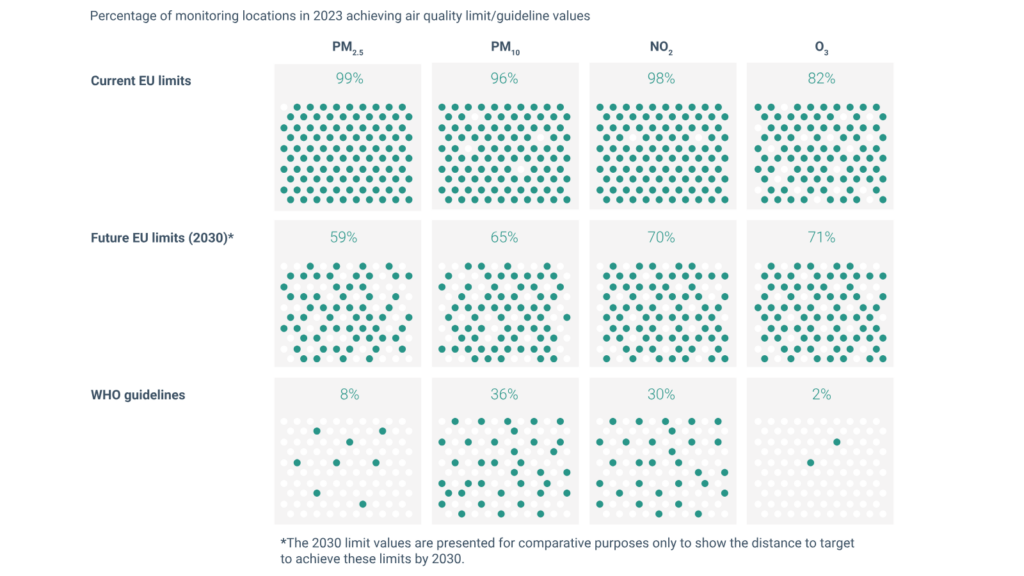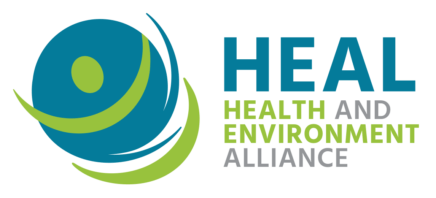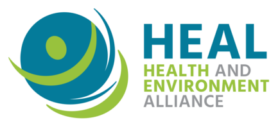HEAL welcomes the call from 250 scientists urging the European Commission to follow scientific recommendations and include provisions to account for the effects of chemical mixtures to better protect health in the upcoming revision of REACH, the EU’s regulation for chemicals.
Air pollution remains the largest environmental health risk for people in the EU, and more action to tackle it at the source is urgently needed, according to the 2025 edition of the Air Quality Status report by the European Environment Agency (EEA). As more health protective clean air standards will apply as of 2030, HEAL urges national and city authorities to step up on clean air measures, as progress has been too slow.
The EEA’s latest report underlines that the vast majority (94%) of the EU urban population remains exposed to particulate matter (PM2.5) concentrations above the World Health Organization (WHO) recommendations. This situation confirms the need to improve air quality further to reduce the health impacts, which include asthma, lung cancer, heart disease, strokes, chronic obstructive pulmonary disease, dementia, and worsening mental health.
In 2023, more than every second air quality monitoring station (59%) monitoring PM 2.5 concentrations across EU member states were already meeting the annual limit value (10 μg/m3) that will enter into force in 2030. Compared with the WHO guidelines however (5 μg/m3), only less than 1 in 10 stations (8%) were achieving the science-based recommended levels.

On 1 January 2030, new legally binding limit values for concentrations of particulate matter (PM2.5,PM10 ) as well as nitrogen dioxide (NO2 ) will enter into force, in line with the revised Ambient Air Quality Directive (AAQD, Directive (EU) 2024/2881 ).
The directive aligns EU’s clean air standards more closely with the WHO air quality recommendations, while regrettably not fully updating it with the scientific recommendations. However, HEAL considers that the timely transposition and implementation of the AAQD has a huge potential to lessen people’s suffering, prevent disease and achieve economic savings.
This significant step forwards for reducing both health and economic impacts of air pollution is less than 5 years from now.
Today’s policy (and budgetary) decisions in member states will be instrumental for the successful achievement of the health benefits the EU aims for.
The progress we see on cleaner air for better health is currently too slow, and efforts for preventative action are lagging. 2030 – the year for which updated clean air standards will apply – is around the corner. Governments, regions and cities have to act now to ensure timely compliance with the new legislation and secure better health for all. Allocating the right investments right now will save lives, prevent diseases and reduce economic costs.
Sophie Perroud-Akkerman, Senior Coordinator, Health and Air Quality


